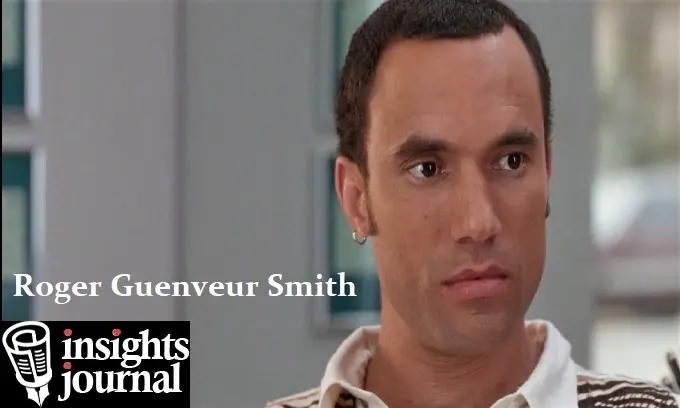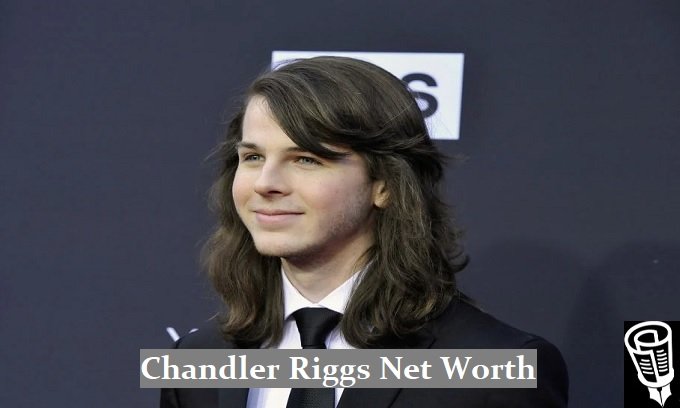Have you ever heard of Roger Guenveur Smith? He’s a pretty amazing guy who’s made a big splash in the world of acting and theater. Let’s dive into his story and see what makes him so special!
Introduction to Roger Guenveur Smith
Roger Guenveur Smith is a super-talented actor, playwright, and director. He’s been in the entertainment biz for over 30 years and has made quite a name for himself. Born on July 27, 1955, in Berkeley, California, Smith has become famous for his one-man shows and his work in movies and TV.
What’s so cool about Smith? Well, he’s not just an actor. He writes his own plays and directs them too! He’s especially good at bringing historical figures to life on stage. And get this – he often does it all by himself in one-man shows. That’s pretty impressive, right?
Smith has worked with some big names in Hollywood, like Spike Lee, and has been in popular movies and TV shows. But what really makes him stand out is how he uses his art to talk about important stuff like racial issues and social justice. He’s not afraid to tackle tough topics and make people think.
The Rise of a Multifaceted Artist
Early Life and Education
So, how did Roger Guenveur Smith become such a talented artist? It all started when he was young. Growing up in Berkeley, California, Smith was surrounded by lots of different cultures and ideas. This probably helped spark his interest in storytelling and social issues.
Smith was a smart kid and loved learning. He went to college at Occidental College in Los Angeles. That’s when he really got into theater and started honing his acting skills. But he didn’t stop there! After graduating, he went to Yale University to study even more about acting and theater.
Transition into Acting and Playwriting
After finishing school, Smith jumped right into the world of acting. He started doing plays in theaters around Los Angeles and New York City. But he wasn’t content with just acting in other people’s plays. Nope, he wanted to create his own stories!
So, Smith started writing his own plays. He used his knowledge of history and his passion for social justice to create powerful stories. And guess what? People loved them! His unique style of storytelling, where he often played all the characters himself, started getting a lot of attention.
Breakthrough Roles and Collaborations
Work with Spike Lee
One of the biggest breaks in Smith’s career came when he met famous director Spike Lee. Lee saw how talented Smith was and started casting him in his movies. Their first big project together was the movie “Do the Right Thing” in 1989. Smith played a small but memorable role, and it helped put him on the map in Hollywood.
After that, Smith and Lee worked together on several other movies. Some of the most famous ones are “Malcolm X” and “He Got Game.” Working with Spike Lee helped Smith get noticed by other directors and opened up more opportunities for him in the film industry.
Notable Film and Television Appearances
But Smith didn’t just stick to Spike Lee movies. He started appearing in all sorts of films and TV shows. Some of his other big movie roles include parts in “American Gangster” and “Dope.” On TV, he’s been in popular shows like “K Street” on HBO and “Oz.”
What’s cool about Smith is that he brings the same intensity and thoughtfulness to his film and TV roles that he does to his stage performances. Whether he’s in a big Hollywood movie or a small independent film, he always gives it his all and tries to bring something special to the character.
Mastering the One-Man Show Format
Development of Solo Performance Style
Now, let’s talk about what Roger Guenveur Smith is really famous for – his one-man shows. A one-man show is when an actor performs all by themselves on stage, playing all the characters in the story. It’s super hard to do, but Smith is a master at it!
Smith started developing his solo performance style in the 1990s. He wanted to tell stories that weren’t being told in mainstream theater, especially stories about important figures in African American history. By doing one-man shows, he could have complete control over the story and how it was told.
Signature Techniques and Approaches
So, how does Smith make his one-man shows so awesome? He uses a bunch of cool techniques:
He does tons of research to really understand the historical figures he’s portraying.
He uses his voice and body in amazing ways to create different characters.
He mixes in music, sound effects, and sometimes even video to make the performance more engaging.
He often talks directly to the audience, making them feel like they’re part of the story.
Smith’s approach to solo performance is all about bringing history to life in a way that feels fresh and relevant. He doesn’t just recite facts – he makes you feel like you’re right there with these historical figures, experiencing their struggles and triumphs.
Bringing Historical Figures to Life
Frederick Douglass NOW
One of Smith’s most famous one-man shows is called “Frederick Douglass NOW.” In this show, he plays Frederick Douglass, a famous African American leader who fought against slavery in the 1800s. But Smith doesn’t just stick to the history books. He mixes in modern language and issues to show how Douglass’s ideas are still important today.
The show is super intense. Smith becomes Douglass on stage, using his powerful voice and presence to make the audience feel like they’re really listening to this great historical figure. It’s a performance that’s gotten a lot of praise from critics and audiences alike.
Rodney King
Another of Smith’s powerful one-man shows is about Rodney King. Remember him? He was an African American man who was beaten by police in Los Angeles in 1991. The incident sparked huge riots and discussions about police brutality and racism.
In his show, Smith doesn’t just tell King’s story. He explores the whole complex situation, looking at different perspectives and asking tough questions. It’s a show that makes people think hard about race relations in America and how we treat each other.
A Huey P. Newton Story
Smith also created a one-man show about Huey P. Newton, one of the founders of the Black Panther Party. This show is a deep dive into Newton’s life, his ideas, and the turbulent times he lived in.
What’s cool about this show is how Smith uses different voices and movements to bring not just Newton, but a whole cast of characters to life. He shows the complexity of Newton’s personality and the challenges he faced. The show was so good that it was even made into a TV movie!
Themes and Social Commentary in Smith’s Work
Exploration of Racial Issues and Civil Rights
One of the big things that makes Roger Guenveur Smith’s work so powerful is how he tackles important social issues, especially stuff about race and civil rights. In pretty much all of his performances, whether it’s a one-man show or a movie role, Smith digs into these tough topics.
He doesn’t shy away from showing the ugly parts of history or the problems we still face today. But he also celebrates the strength and resilience of people who have fought for equality. Through his art, Smith helps us understand the long struggle for civil rights and how it connects to what’s happening now.
Addressing Contemporary Social Challenges
But Smith doesn’t just talk about the past. He uses his performances to shine a light on problems we’re dealing with right now. Things like police brutality, economic inequality, and ongoing racism. He takes these big, complicated issues and makes them personal through his characters and stories.
What’s really cool is how Smith connects historical events to current issues. He shows us that a lot of the stuff we’re dealing with today has roots in the past. By doing this, he helps us understand these problems better and think about how we can solve them.
Critical Acclaim and Recognition
Awards and Nominations
All of Smith’s hard work and talent haven’t gone unnoticed. He’s won a bunch of awards and been nominated for even more. One of his biggest wins was an Obie Award, which is like the Tony Awards but for Off-Broadway and Off-Broadway shows. He won it for his performance in “A Huey P. Newton Story.”
Smith has also been recognized for his film work. He was nominated for a Screen Actors Guild Award as part of the cast of “American Gangster.” His TV movie version of “A Huey P. Newton Story” won a Peabody Award, which is a big deal in the world of TV and radio.
Impact on Theater and Film Industries
But Smith’s impact goes beyond just awards. He’s changed the way people think about solo performances and how to tell stories about historical figures. Lots of other actors and playwrights have been inspired by his work.
In the film industry, Smith is known for bringing depth and authenticity to his roles, even when they’re small parts. He’s shown that you don’t need to be the star of a movie to make a big impact. His work has helped pave the way for more diverse and complex representations of African American characters in film and TV.
Roger Guenveur Smith’s Artistic Legacy
Influence on Contemporary Performers
Roger Guenveur Smith has become a role model for lots of young actors and performers, especially those interested in solo performances and tackling social issues through art. His unique style of blending history, social commentary, and powerful performances has inspired a whole new generation of artists.
Many performers have tried to copy Smith’s approach, creating their own one-person shows about historical figures or important social issues. But Smith’s influence goes beyond just his format. He’s shown other artists how to be brave in their choices, how to dig deep into research, and how to use their art to say something important about the world.
Contributions to African American Theater
Smith has made a huge impact on African American theater. He’s brought stories and characters to the stage that might not have been seen otherwise. By focusing on figures like Frederick Douglass, Huey P. Newton, and Rodney King, he’s helped to expand the range of African American stories being told in the theater.
But it’s not just about the stories he tells. Smith has also pushed the boundaries of what African American theater can be. His experimental approach, mixing different performance styles and media, has opened up new possibilities for other artists. He’s shown that African American theater can be innovative, challenging, and deeply thought-provoking.
Conclusion: The Enduring Power of Smith’s Performances
Reflection on His Unique Artistic Voice
When we look back at Roger Guenveur Smith’s career, what stands out is his unique voice as an artist. He’s not afraid to be different, to tackle tough subjects, or to push himself and his audience. Whether he’s on stage alone or acting in a big Hollywood movie, Smith brings a level of intensity and thoughtfulness that’s all his own.
What makes Smith’s work so powerful is how he connects the past to the present. He doesn’t just tell us about history – he makes us feel it, and he shows us why it matters today. His performances aren’t just entertainment. They’re a call to think, to feel, and to act.
Future Projects and Continued Relevance
So, what’s next for Roger Guenveur Smith? Well, he’s not slowing down! He continues to perform his one-man shows, bringing them to new audiences around the country. He’s also still acting in movies and TV shows, always looking for roles that let him explore complex characters and important issues.
But more than that, Smith’s work remains super relevant. As long as we’re still grappling with issues of race, justice, and equality in America (and let’s face it, we are), Smith’s performances will have something important to say. He reminds us of where we’ve been, helps us understand where we are, and challenges us to think about where we’re going.
In the end, Roger Guenveur Smith isn’t just an actor or a playwright. He’s a storyteller, a historian, and a voice for social change. Through his powerful performances and thoughtful approach to art, he’s made a lasting impact on American theater and film. And he’s not done yet! So keep an eye out for Roger Guenveur Smith. Whether on stage or on screen, he’s sure to keep bringing us performances that entertain, educate, and inspire.
Was this article useful to you? If yes, explore our site for more insightful content.



